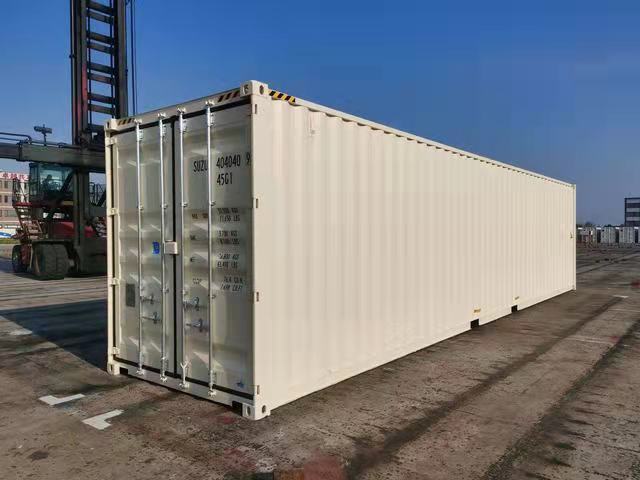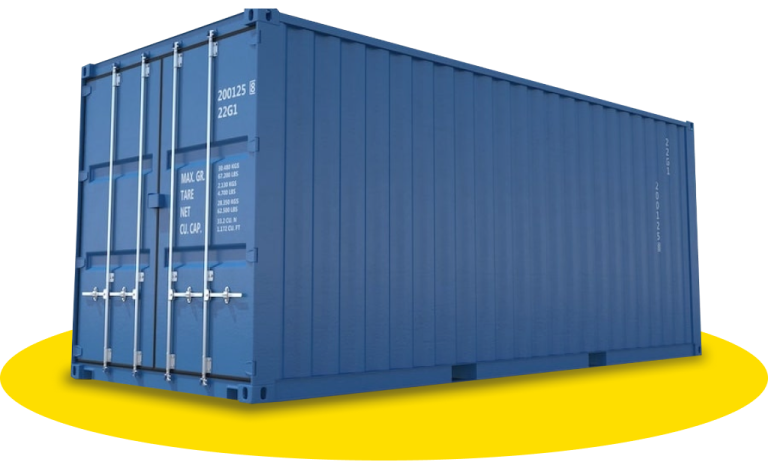Case Study: A Business That Used a New Shipping Container 40 x 8 x 9.6 to Stand Out
Case Study: A Business That Used a New Shipping Container 40 x 8 x 9.6 to Stand Out
Blog Article
The Ultimate Guide to Choosing the Right Delivery Container for Your Requirements
When it concerns selecting the appropriate delivery container, comprehending your details needs is essential. You'll desire to take into account elements like size, kind, and product to ensure you make the very best choice. From typical sizes to specialized choices, there's a great deal to discover. Plus, budgeting for both the container and any type of alterations can make a big difference. Let's break down the crucial facets to help you locate the excellent fit for your demands.
Recognizing Shipping Container Sizes
When you're selecting a shipping container, recognizing the numerous sizes offered is crucial for making the ideal choice. Delivering containers generally are available in standard lengths of 20 and 40 feet, but you'll likewise locate other measurements. Knowing the dimension you need depends on what you prepare to store or transport.If you're moving smaller sized items, a 20-foot container may be suitable, while bigger shipments usually call for a 40-foot container. Remember that the elevation can likewise differ; high dice containers offer additional vertical room, which can be advantageous for taller goods - Lease New Shipping Container 40' x 8' x 9’6".Before making a decision, gauge your freight, and think about just how much area you'll require for filling and dumping. Always consider possible future requirements-- choosing a somewhat bigger container may save you headache down the line. Ultimately, choosing the right size will certainly improve efficiency and guarantee your items are secure during transit
Sorts Of Delivery Containers Available
There are numerous types of delivery containers available, each designed for certain functions and freight demands. The common completely dry container is flexible, ideal for basic freight. If you're shipping subject to spoiling items, think about a cooled container, which keeps a regulated temperature level. For extra-large items, high cube containers supply extra elevation, accommodating taller loads.If you need to deliver hefty equipment or equipment, flat shelf containers give a durable base without wall surfaces. At the same time, open-top containers enable for very easy loading of tall cargo, with a detachable tarp covering for protection. If you're searching for versatility, consider a collapsible container that can be conveniently stored when not in use.Lastly, specialized containers like storage tank containers are utilized for fluids, while vented containers are made for bulk freight that needs air flow. Knowing your cargo kind will certainly help you choose the ideal container to satisfy your delivery needs successfully.
Product Factors To Consider for Sturdiness
When picking a shipping container, the material plays a vital duty in its longevity. You'll intend to weigh the advantages of steel versus light weight aluminum, specifically relating to rust resistance. Comprehending these factors can assist you make an extra enlightened option for your delivery needs.
Steel vs. Aluminum Containers
Just how do you pick in between steel and aluminum containers for your delivery needs? Begin by thinking about toughness. Steel containers are robust and offer excellent stamina, making them perfect for heavy tons and rough problems. They resist damage from influences and are usually cheaper, which can be a major variable for budget-conscious buyers.On the other hand, aluminum containers are light-weight, which can save you on delivery prices. They're less complicated to navigate and are a great option if you need to carry products frequently. Light weight aluminum is normally much more expensive and much less durable than steel. Evaluate your certain demands carefully, consisting of weight, price, and the sort of freight you'll be delivery, to make the ideal choice for your scenario.
Corrosion Resistance Variables
Picking the best material does not simply entail weight and cost; rust resistance plays a significant role in durability. When choosing a delivery container, think about the setting it'll face. Steel containers, while strong, can corrosion otherwise correctly dealt with. Seek options with protective finishes or galvanization to improve their life expectancy. Light weight aluminum, on the various other hand, provides natural deterioration resistance, making it excellent for seaside areas or humid conditions. Nevertheless, it can be extra costly. Furthermore, examine the container's usage-- if it'll be exposed to chemicals or rough weather, focus on products that can withstand these problems. Buying a corrosion-resistant container now can save you from pricey repair work or replacements down the line. Choose wisely for lasting benefits.
Adjustments and Modification Options
Shipping containers aren't just for transferring products; they can be transformed to meet your specific needs through various alterations and customization options. You can transform a typical container into a relaxing office, a momentary retail store, or perhaps an individual fitness center. The possibilities are nearly endless.Think concerning adding windows, insulation, or ventilation to boost convenience. You could also take into consideration electrical circuitry, pipes, or even personalized shelving to improve performance. If security's a problem, reinforced locks can supply peace of mind.For visual allure, you can paint the container or add a special design to make it attract attention. Do not ignore flooring options-- whether you want sturdy plywood or something much more sophisticated, it can elevate the space.Ultimately, customizing your shipping container to match your requirements can enhance usability and develop an one-of-a-kind setting that reflects your style.
Analyzing Your Transportation Demands
When it comes to utilizing your customized delivery container, understanding your transport needs is essential. Begin by determining what you'll be delivery-- whether it's hefty devices, retail goods, or individual items. Each kind of freight has various needs regarding dimension, weight, and accessibility.Next, take into consideration the range and setting of transportation. Are you delivering locally, country wide, or worldwide? This impacts the container's design and functionality. If you're using trucks, assure your container fits conventional dimensions for easy loading and unloading.Additionally, consider transit conditions. Will your things need special security from climate or temperature variations? If so, you might require insulation or ventilation functions in your container.Lastly, analyze exactly how usually you'll be delivering products. Constant shipments might call for a more long lasting and functional container to fulfill ongoing demands. By dealing with these aspects, you'll be well-prepared to pick the best delivery container for your requirements.
Budgeting for Your Shipping Container
Setting an allocate your delivery container is crucial for making sure a smooth acquiring process. First, determine just how much you can pay for to spend. Remember that prices can vary substantially based on dimension, condition, and kind. New containers normally set you back more, yet utilized ones can supply substantial savings.Next, take into consideration any type of extra prices you could sustain, such as transportation charges, shipment fees, and adjustments. If you prepare to personalize the container, consider those expenses too. Study various suppliers to contrast prices and find the most effective deal that fulfills your needs.Don' t fail to remember to include any kind of licenses or regulations that may relate to your acquisition and use the container. By clearly describing your spending plan, you'll be better prepared to make enlightened decisions, ensuring you get the best container without breaking the bank.
Maintenance and Take Care Of Longevity
To guarantee your delivery container lasts for years, regular upkeep is key. Begin by inspecting the outside for corrosion, dents, and damage. If you detect any problems, address them right away to avoid additional degeneration. Tidy the container regularly, both throughout, to remove dirt, particles, and moisture that can bring about corrosion.Ensure the doors seal effectively and oil the hinges to avoid rust and sticking. If you're utilizing the container for storage, think about adding ventilation to minimize moisture and mold and mildew growth. For extra protection, use a rust-inhibiting paint or sealer annually.If your container's situated in a rough setting, like seaside areas, you could need to increase maintenance regularity. Watch on the floor covering, too; any type of signs of wear must be repaired as soon as possible. With these simple steps, you'll extend the life of your shipping container considerably.
Regularly Asked Concerns
Just how Do I Locate a Dependable Shipping Container Supplier?
To discover a dependable shipping container vendor, beginning by researching on-line evaluations, requesting for referrals from buddies or sector calls, and comparing costs. Constantly inspect their credentials and guarantee they use top quality containers that satisfy your needs.

Can I Rent a Delivery Container Rather Than Acquiring?
Yes, you can definitely lease a shipping container instead of buying one. Many vendors supply rental alternatives, which can save you money and give adaptability if you only need it for a short period.
What Permits Are Required for Container Placement?

Are Shipping Containers Weatherproof and Suitable for Outdoor Storage?
Yes, shipping containers are usually weatherproof, made to stand up to severe Shop New Shipping Container 40' x 8' x 9’6" conditions. Their durable construction keeps your things secure and dry, making them suitable for outside storage. Simply guarantee proper ventilation to stop dampness build-up inside.
Exactly how Do I Deliver a Shipping Container Once Acquired?
Report this page